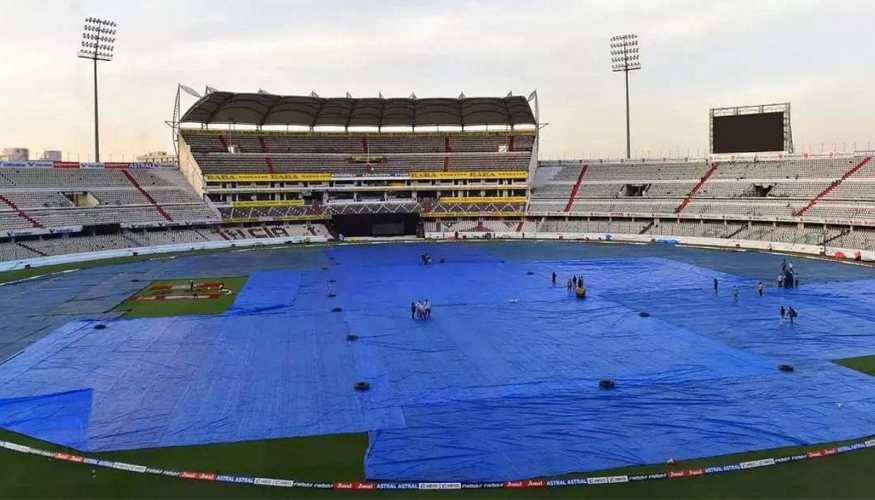The Rajiv Gandhi International Cricket Stadium in Hyderabad is renowned not only for hosting some of the biggest cricket matches in India but also for its unique weather patterns that play a significant role in shaping match outcomes and player performances. Understanding the weather conditions here is crucial for cricketers, fans, and analysts alike.
Climate Overview
Hyderabad, where the stadium is located, experiences a tropical wet and dry climate characterized by hot, dry summers, an active monsoon, and mild winters. This variation directly impacts the pitch, ball movement, and players’ comfort.
- Summer (March to June): Daytime temperatures can soar above 40°C, creating dry and hard pitches. This often favors batsmen early on but spinners come into play as the pitch starts deteriorating.
- Monsoon (July to September): Moderate to heavy rainfall is common, resulting in interruptions during matches, lush outfields, and humid conditions. Bowlers, especially those who thrive on swing and seam, tend to benefit during this period.
- Winter (October to February): Pleasant temperatures (15°C to 30°C) offer optimal playing conditions, with balanced contest between bat and ball. The pitches in this period are generally stable, making it ideal for cricket events.
Seasonal Impact on Cricket Matches
The weather at Rajiv Gandhi International Stadium influences not just enjoyment for spectators but directly affects game strategy. Teams often decide batting or bowling order based on forecast predictions.
Summer:
- Hard, dry wickets facilitate higher scores, especially in day matches.
- Evening games start warmer (above 35°C) and cool down slightly at night (27–29°C).
- Spinners get more help as heat dehydrates and cracks the pitch.
Monsoon:
- Rainfall averages can exceed 199mm in September, and there can be up to 14 rainy days per month.
- Humidity remains high, reaching up to 75%.
- Rain interruptions in July, August, and September can impact match schedules and lead to shortened games.
- Outfields may become slippery, demanding additional caution from fielders.
Winter:
- Cooler and more comfortable playing conditions.
- Minimal precipitation, excellent visibility, and steady breeze aid in smooth match conduct.
- Balanced wickets allow both batsmen and bowlers to perform optimally.
Daily and Hourly Forecasts
On typical match days, forecasts range from partly cloudy mornings with chances of breezy spells and showers, to clear and dry afternoons.
- Early mornings (6–9 am): Temperatures around 23–28°C, humidity high at 70–90%.
- Afternoon peaks (12–3 pm): Can touch 31°C in late summer, dropping to 25°C in monsoon with increased cloud cover.
- Evenings (6 pm onwards): Cooler at 20–25°C, humidity often over 60%, especially in wet months.
- Wind speeds: Range from a gentle 10 kmph up to 28 kmph on particularly windy days, providing additional movement for swing bowlers.
Air Quality and Atmospheric Factors
Air quality at the stadium varies, occasionally reaching levels unhealthy for sensitive groups due to urban pollution, especially during dry spells. However, rainfall tends to clear the air, making monsoon months somewhat better for outdoor activity in terms of pollution.
- Visibility is typically moderate, with occasional haze on hot days.
- Pressure readings average between 1000 and 1008 mb, influencing ball movement, especially during cloudy or rainy conditions.
Pitch and Weather Interaction
The interplay between pitch and weather is an essential factor in match preparation:
- Hot summers dry the pitch, leading to cracks and increased spin, especially in the latter half of matches.
- Wet monsoon conditions help grass growth, slowing the outfield and making for challenging batting conditions.
- Winter months maintain a healthy pitch balance, pleasing both batsmen and bowlers.
Stadium Setting and Local Conditions
Located in Uppal, Hyderabad, the Rajiv Gandhi International Stadium is surrounded by urban infrastructure, which adds to the localized heat and humidity during peak summer. Its bowl-shaped design helps manage wind, but sudden gusts can alter match conditions by affecting high catches and swing bowling.
Advice for Spectators and Players
- During peak summer, stay hydrated and wear lightweight clothing to cope with the intense heat.
- Monsoon matches may require umbrellas or raincoats due to sudden showers.
- Winter games are most comfortable for viewers, with pleasant day-night temperature variation and little risk of weather delays.
Monthly Weather Averages
| Month | Avg Temp (°C) | Rainfall (mm) | Humidity (%) | Impact on Game |
|---|---|---|---|---|
| January | 19–27 | Low | 55–60 | Ideal batting track |
| April | 30–42 | Very Low | 40–50 | Dry, aids spin bowlers |
| July | 25–33 | High (>200) | 70–80 | Risk of delays |
| October | 22–31 | Moderate | 65–70 | Balanced conditions |
Rainfall, temperature, and humidity charts are essential references for teams selecting strategies and for fans scheduling visits to the stadium.
Conclusion
The weather at Rajiv Gandhi International Stadium is more than just a backdrop; it’s a crucial factor that influences the outcome of cricket matches, player strategies, and viewing experience. With Hyderabad’s dynamic climate, every season brings unique challenges and opportunities for teams and spectators alike. Understanding these patterns helps players prepare effectively and fans make the most of their stadium visit.


